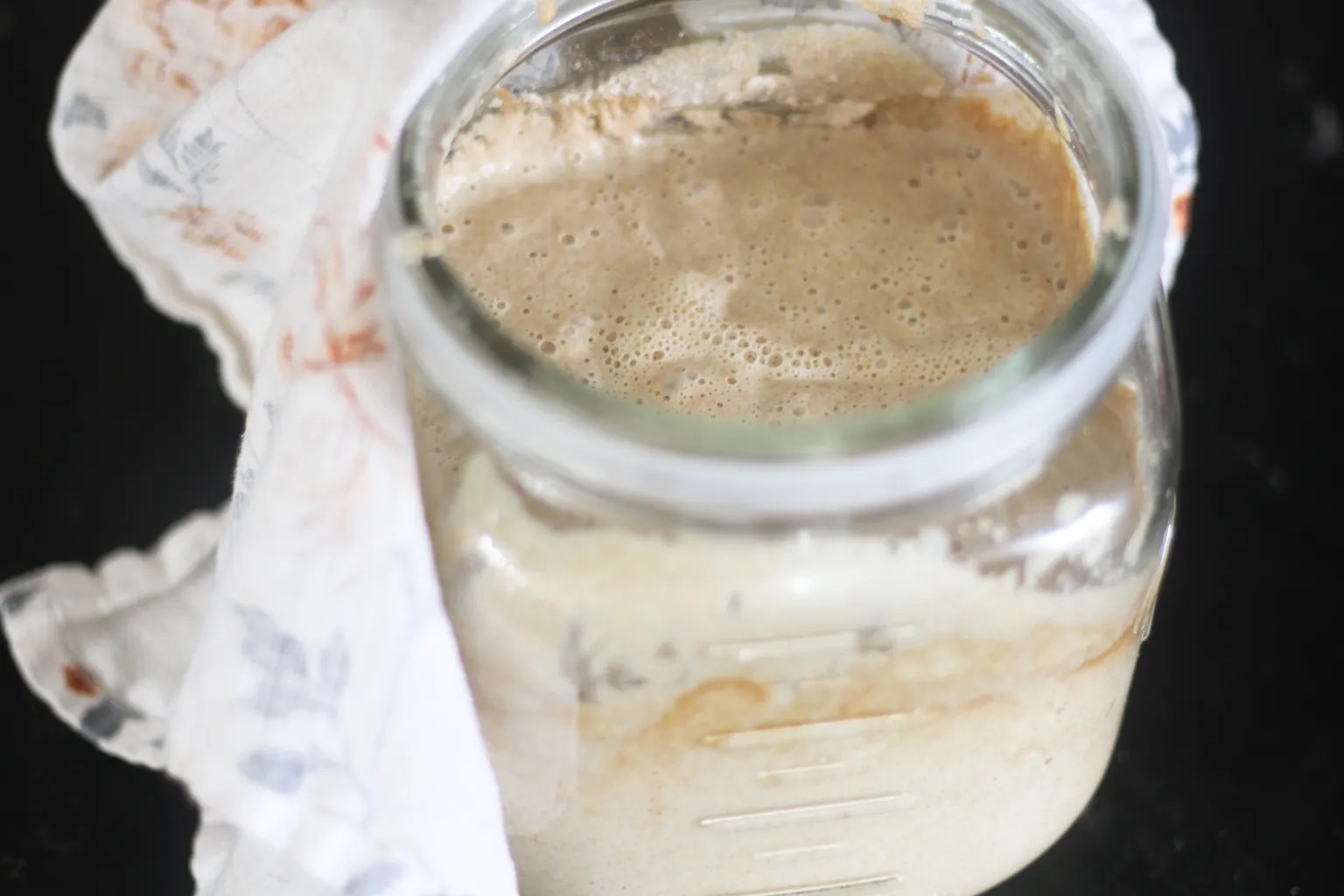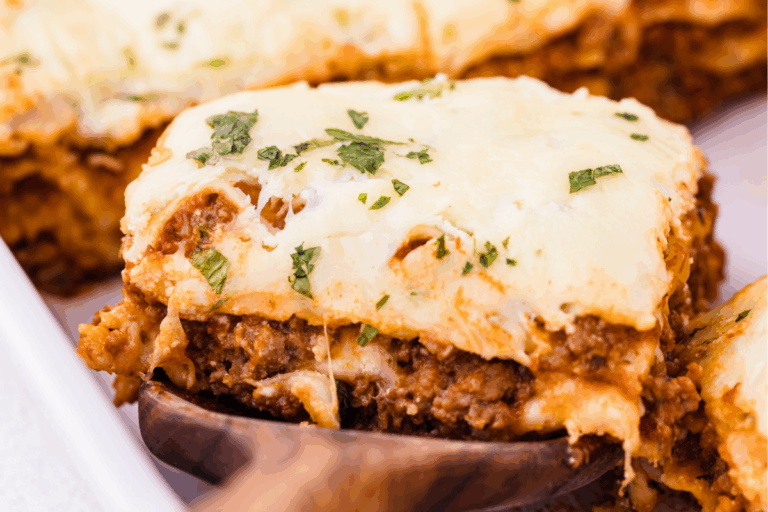How To Make Sourdough Amish Bread
Sourdough Amish bread is a simple sourdough sandwich loaf that everyone will love!

I may be compensated for some items linked in this post at no extra cost to you.
This post is so long overdue.
This recipe is hands down the one I get asked for most often. And for good reason!
Sourdough bread is healthier
Because two things:
- No isolated yeast is used to get a rise. All the leavening happens by way of the wild yeast trapped in your sourdough starter, which is completely natural. This means the entire bread recipe can be made with staple ingredients. This is how they made bread way back in the day.
- The enzymes released during the fermentation process with sourdough bread pre-digest the flour and make all the micronutrients available to us. So yes, that includes gluten – a batch of sourdough bread that’s proved for 24 hours+ is *almost* completely gluten-free.
How to Make a Sourdough Starter

Plus, there’s something special about making bread the old-fashioned way. The way the women of the Bible made it. I feel connected to all the mothers throughout history before the age of chemistry in this little thing I do for my family.
Plus, (last thing). IT IS DELICIOUS. You all know I love food.
Ingredients
- 1 cup warm water (no warmer than 105°F)
- 1 cup warm milk (no warmer than 105°F)
- 1 cup active sourdough starter (doubled and bubbly)
- ½ cup honey or sugar
- ½ cup olive oil
- 2 t salt
- 6 cups flour

Sourdough Amish Bread Instructions
- AUTOLYSE: Combine warm water, warm milk, active starter, honey/sugar, olive oil, and salt in a large bowl or bowl of a stand mixer and whisk until combined
- Work in flour 1 cup at a time until the dough forms into a ball that’s just a bit sticky to the touch
- Turn the dough out onto a floured surface, ensure all the flour is worked in, cover, and let rest for 30 minutes
- After the rest, knead the dough until it becomes more smooth and stretchy. Do not over-knead. 1-2 minutes. A series of stretch and folds every 30 minutes over a couple hours is ok too.
- Oil the bowl you used in steps 1 & 2 and return the dough to the bowl, cover and let rise until doubled in size.
- Punch the dough down, remove it from the bowl, cut it into 3 equal portions, and shape it into loaves
- Then place into a greased loaf pan, cover, and let rise until doubled in size
- Bake at 350°F for 30 minutes.
- Allow bread to cool on a wire rack for at least 30 minutes before slicing with a bread knife to serve
Sourdough Amish Bread Photo Tutorial
Whisk together 1 cup warm water, 1 cup warm milk, 1 cup fed sourdough starter (fed within the last 8 hours, doubled and bubbly), 1/2 cup honey or sugar, 1/2 cup olive oil, and 2t salt in a big mixing bowl or stand mixer and whisk until combined.


Autolyse (gentle mixing of ingredients followed by a period of rest prior to stretching and folding or kneading)
In this post, I am using organic, unbleached, white all-purpose flour, I use this most often because my husband prefers it.
Add about 6 cups of flour, 1 cup at a time to make sure you don’t add too much. You may use a bit more, or a bit less depending on the type of flour you use. You want to end up with a dough ball that’s workable, but still a bit sticky. If you like your bread very firm, add more flour so it’s not sticky. I like mine a bit spongy and not so dense.

When my dough looks something like this, I turn it out onto the counter and give it just a touch of kneading to gather all the loose flour into the ball of dough. But you do NOT want to knead a bunch just yet. Just get it to come together.

Like this. A neat ball of dough that holds its shape and doesn’t fall flat, but is still a bit sticky to the touch. (If your dough doesn’t hold its shape on the counter, add more flour 1/4 cup at a time and knead in until it does. Remember you can add more flour for a more structured loaf) Cover the dough with a towel and let it rest for 30 minutes on the counter. Then after the rest, knead it just enough to get a smooth, stretchy consistency that’s even all the way through, maybe a minute or two.

After the rest and the kneading, oil the same bowl you used to mix the dough and place the dough inside. Cover with a damp tea towel.
Now, we begin the first rise (the bulk ferment)

Set the covered dough aside and let it rise on the countertop until it doubles in size. The amount of time this takes will depend on the temperature, humidity, and strength of your starter. During the summer months we keep our house warmer, so my dough doubles quickly. But in the winter we keep the house cooler and it takes longer. Just watch it for a good rise. The longer the dough ferments, the more sour your bread will be. If you do not like a very sour bread, consider proofing in a proofing station, oven with proof setting, or a warm spot in the house.
After the bulk ferment,
punch the dough down, then turn it out onto a floured surface. Divide it into 3 equal portions, then shape each into a loaf and place it in a greased loaf pan for the second rise.
Once the loaves are shaped and placed in the loaf pan
cover them and let them rise until doubled in size.
Now, it’s time to bake!
Preheat the oven to 350F and bake for 30 minutes. Allow the bread to cool on a wire rack for at least a half hour before slicing and serving.

Storage:
I’ve never tested it longer than a week because we always eat it before then. But it has lasted up to a week stored in an airtight container at room temp.
It can also be refrigerated to stretch that window of freshness.
And, it can be frozen for later. I freeze bread fairly often.


Sourdough Amish Bread
Ingredients
Equipment
Method
- AUTOLYSE: Combine warm water, warm milk, active starter, honey/sugar, olive oil, and salt in a large bowl or bowl of a stand mixer and whisk until combined
- Work in flour 1 cup at a time until the dough forms into a ball that's just a bit sticky to the touch
- Turn the dough out onto a floured surface, ensure all the flour is worked in, cover, and let rest for 30 minutes
- After the rest, knead the dough until it becomes more smooth and stretchy. Do not over-knead. 1-2 minutes. A series of stretches and folds every 30 minutes over a couple hours is ok too.
- BULK FERMENT: Oil the bowl you used in steps 1 & 2 and return the dough to the bowl, cover and let rise until doubled in size.
- Punch the dough down, remove it from the bowl, cut it into 3 equal portions, and shape it into loaves
- Then place into a greased loaf pan, cover, and let rise until doubled in size
- Bake at 350°F for 30 minutes.
- Allow bread to cool on a wire rack for at least 30 minutes before slicing with a bread knife to serve





I have been making this recipe for w years now and we love it. I would like to try making it with freshly milled whole wheat. Do you know what adjustments I would need to make to the recipe to do this?
Miss you so much!!! Step 3 William wont let it rest. He keeps sneaking and eating the dough ( literally as im typing).? Can’t wait to eat some myself if theres any left to bake!
I really like this recipe but my family rarely needs three loafs of bread at a time. Any tips for halfing the recipe or storing the dough for another day?
I mixed my dough last night. It has doubled in size during first rise. I held back a little flour to mix in while kneading. It looks more fluid than previous times I’ve made the bread. I’ve never been happy with the bread. It didn’t rise as well as it should during the second rise. The bread has always been really dense. I’m hoping for better this than the past few Baking’s. I’m concerned though. I hope for better when I add the remaining flour. I held it back because someone told me adding flour when kneading was the cause of the dense bread. Any help?
hello! What size bread pan are you using?
What size loaf pan do you use? Thank you!
Excuse my ignorance but, what is ‘EVOO’.
Thanks,
Suzanne
Like you I wondered this, being in the U.K. so I googled it and it’s; extra virgin olive oil ! I used sunflower oil in mine as my partner doesn’t like olive oil.
So I just got to the part where we let it sit for 24 hours and realized i forgot the salt 🙁 So far it looks great but I’m wondering if I should try to add it somehow before I put into pans tomorrow? Will it taste funny without it? I mean, we will of course be slopping salted butter on it – lol
You’ll be ok!! It’s just a flavor thing but yes, with salted butter all is well ?
For some reasons, recipes with lengthy chunks of time just make my brain stop working…so…could you please share when you normally start it? Is it something you start before going to bed or a first thing in the morning type deal? Let’s say summer time(I’m in AZ, it’s nearly always summer here.)
Hey Laura! You’ll probably have a 24 hour bulk rise so if you start in the morning, you’ll bake in the evening the next day. If you start in the evening, you’ll bake in the morning two days later!
Mine is going through the bread pan rise, SO impressed with the rise despite the fact that my sourdough starter has been having trouble bubbling after feedings. My starter is about 6 months old and my first rise almost TRIPLED in size. If you have a cold house like me, stick it in your oven with the light on, or put your oven as low as it will go and turn it off after a few minutes and stick your loaves in. It helps warm it up a bit.
So happy to hear your rise is good! And great tip with the oven – a little warmth goes a long way!
Mine totally failed! No rise at all, so upsetting. I know my starter is good as I did the water test.
Oh no!! How old is your starter?